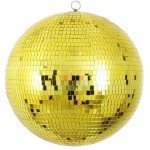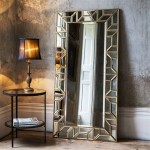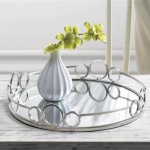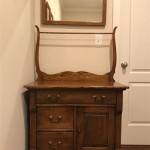Standard Bathroom Mirror Size
Selecting the right bathroom mirror involves considering various factors, including the size of the vanity, the overall bathroom dimensions, and the desired aesthetic. While there's no single "standard" size, understanding common dimensions and proportions can significantly simplify the decision-making process.
A common guideline suggests that the mirror should be slightly narrower than the vanity. This creates a visually balanced look and prevents the mirror from overwhelming the space. For example, a 30-inch vanity might be well-suited to a mirror between 24 and 28 inches wide. However, this is a general rule, and deviations are acceptable depending on individual preferences and the specific bathroom layout.
The height of the mirror is another crucial consideration. It should be proportionate to both the vanity and the overall bathroom size. A common height range for bathroom mirrors is between 24 and 40 inches. Taller mirrors can create an illusion of increased space, while shorter mirrors might be more suitable for smaller bathrooms or powder rooms.
For single vanities, a common practice is to choose a mirror that is roughly the same width as the vanity or slightly smaller. This maintains a balanced and symmetrical appearance. For double vanities, a large single mirror spanning the entire length of the vanity can create a unified and spacious feel. Alternatively, two separate mirrors, each positioned above a sink, can offer a more individualized approach.
Medicine cabinets with mirrored fronts offer both reflective functionality and storage space. These cabinets come in various sizes, but common widths range from 12 to 48 inches, with heights typically falling between 24 and 36 inches. The choice of medicine cabinet size depends on the storage needs and the available wall space.
Beyond width and height, the shape of the mirror can also impact the bathroom's aesthetic. Rectangular mirrors are the most common and versatile, readily complementing various design styles. Round or oval mirrors can soften the lines of a bathroom and introduce a touch of elegance. Square mirrors provide a modern and clean look, while more unique shapes, such as arched or geometric designs, can serve as statement pieces.
When selecting a mirror size, it's important to consider the surrounding fixtures and elements. The mirror should not interfere with light fixtures, wall sconces, or other bathroom accessories. Adequate clearance should be provided around the mirror to maintain a functional and aesthetically pleasing layout.
The distance between the vanity top and the bottom edge of the mirror should be carefully considered. A general guideline is to leave a space of 4 to 8 inches between the two. This provides sufficient visual separation while still allowing for comfortable usage.
Ceiling height plays a role in determining the appropriate mirror size. In bathrooms with higher ceilings, taller mirrors can be used to accentuate the vertical space. In bathrooms with lower ceilings, shorter mirrors may be more suitable to avoid a cramped or overwhelming feeling.
The overall style of the bathroom should also influence the mirror choice. A minimalist bathroom design might benefit from a simple, frameless rectangular mirror. A more traditional bathroom might be complemented by a framed mirror with ornate details. Matching the mirror style to the overall bathroom aesthetic creates a cohesive and visually appealing space.
While standard sizes offer a helpful starting point, the ideal mirror size for a particular bathroom depends on several factors. Careful consideration of the vanity size, bathroom dimensions, ceiling height, and overall design style will ensure the chosen mirror enhances the bathroom's functionality and aesthetic appeal.
Measuring the available wall space accurately is essential before purchasing a mirror. This ensures the chosen mirror fits comfortably within the designated area without overwhelming the space or interfering with other fixtures.
Consulting with a design professional can provide valuable insights and guidance in selecting the appropriate mirror size and style. A designer can consider all relevant factors and recommend options that best suit the specific bathroom design.
Exploring various mirror options in showrooms or online catalogs can provide inspiration and help visualize how different sizes and shapes would look in the bathroom. This allows for informed decision-making and ensures the chosen mirror meets both functional and aesthetic requirements.
Considering the reflection provided by the mirror is crucial. A larger mirror will offer a wider field of view, while a smaller mirror might be sufficient for basic grooming tasks. The intended use of the mirror should guide the size selection.

Bathroom Mirror Size Calculator

How To Choose The Best Size Mirror Olde Good Things

Bathroom Mirror Size Calculator

Rectangular Bathroom Mirrors Bevelled Designer Wall Mounted Aica Bathrooms

Mirrored Cabinets And Mirrors Guide Kohler

Bathroom Vanities Buy Vanity Furniture Cabinets Rgm Distribution

Bathroom Mirror Size Calculator In 2024 Double Vanity Sizes Oval

Better Bevel 24 In W X 30 H Frameless Rectangular Beveled Edge Bathroom Vanity Mirror 17151 The Home Depot

Ello Allo 24 In W X H Round Framed Wall Bathroom Vanity Mirror Gold Evm R Fg24 The Home Depot

What Is The Standard Height Of A Bathroom Vanity 2024 Guide








